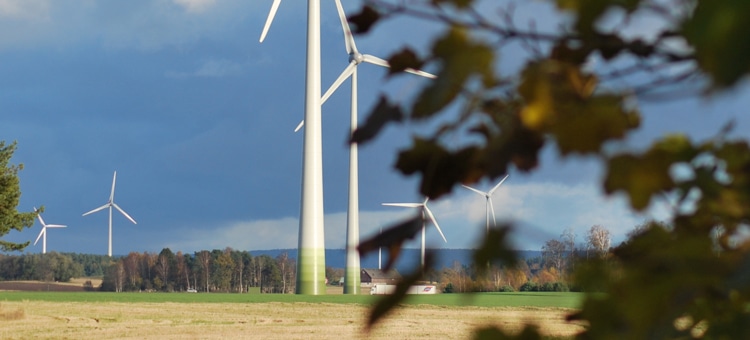Jun 19 2019
The Swedish Wind Power Technology Center (SWPTC) has been collecting and developing knowledge in partnership with industry since 2010, and currently is a national knowledge industry for wind power technology.
The research center has recently commenced its third stage, where it enters larger projects in partnership with numerous disciplines. A number of the research results have garnered interest beyond Sweden, and the center is presently becoming a player on the international field.
 (Photo credit: Anna Hagnell)
(Photo credit: Anna Hagnell)
Wind energy is currently the energy source possessing the maximum potential in the shift towards green energy in Sweden. A national political goal orders that all electricity production must be derived from 100% renewables by 2040. From the present 11%, wind power is estimated to constitute at least 40% of the Swedish electricity production within the next few decades, perhaps more. SWPTC combines concept and practice in a close partnership between academia and industry. The overall goal is to enhance the wind turbine capacity and make production and operation more economical.
New methods for lowering costs and prolonging life-span
Wind power owners can incur high costs due to unexpected down-time in production, not only because of defective components that need to be swapped, but also because of lesser revenue because of no energy production.
In the transition towards 100 percent renewable energy in Sweden, it is important that we can take care of our wind turbines, as they will count for a large part of the electricity supply in the future. An important contribution from SWPTC in promoting the wind energy expansion is to develop better maintenance methods and knowledge about prolonging the life-time of wind turbines.
Sara Fogelström, Coordinator, SWPTC
With data from the wind turbine, an operator can compute the anticipated life span of the various components and, on that basis, provide an ideal maintenance timetable. It also means that an operator can fix the maintenance to a time when there is less amount of wind, when the wind turbine would have a low production in any case.
“The methods developed within SWPTC advocate a so-called opportunistic maintenance, which means that the system proposes replacing of several components at once, as the service technician is on site. Problems can then be addressed before they become too costly and, also, you do not have to go out to the wind farm as often”, Sara adds.
Several research disciplines in collaboration
So far, the center has been amassing fundamental knowledge through different research projects within each of the research disciplines required to understand how a wind turbine functions. For example, at Chalmers, scientists in fluid dynamics are exploring how wind turbines in the forests are impacted by the immediate terrain.
Scientists in dynamics inspect how the mechanical drive-train and specifically the gearbox functions. In electric power engineering, research is being performed on detection of electric faults in the generator and how wind farms can be properly connected at sea. Moreover, scientists in construction engineering are keen to learn how different loads (“forces”) impact the foundation of the wind power turbine. Mathematicians are also interested in calculating how to improve maintenance techniques.
One of the projects that sanctions the whole spectrum of competences is a project about how a single wind turbine is impacted under challenging operating conditions. In a complex landscape, it has to endure ever-changing winds, which results in higher mechanical stress on the gearbox than it would in a flat landscape. This clarifies why maintenance costs are frequently much higher in Sweden, which has a hillier landscape than Denmark which is predominantly flat.
The loads that each individual wind turbine has to endure can differ a lot within a single wind farm. Ola Carlson is a Professor at the Division of Electrical Power Engineering and the Director of SWPTC. He is heading the project, which is conducted in partnership with a number of industrial partners.
“We have developed a calculation model that takes many different parameters into account, which can calculate the accumulated load that an individual wind turbine is subjected to. This knowledge is needed for manufacturers to be able to adapt the design of wind turbines to different operating conditions”, says Ola.
An international player
The research results have garnered attention beyond Sweden as well. The center is currently taking part in numerous international networks and organizations such as the European Academy of Wind Energy, the European Energy Research Alliance, and the international energy agency IEA.
It is an important strategic move. We have already received inquiries of collaboration in major EU projects. Besides being a collaborative platform, it is also a way of spotting trends in the field.
Sara Fogelström, Coordinator, SWPTC